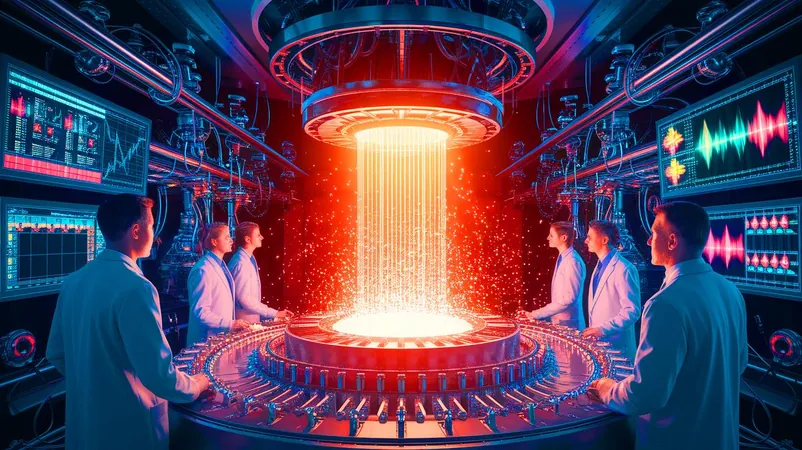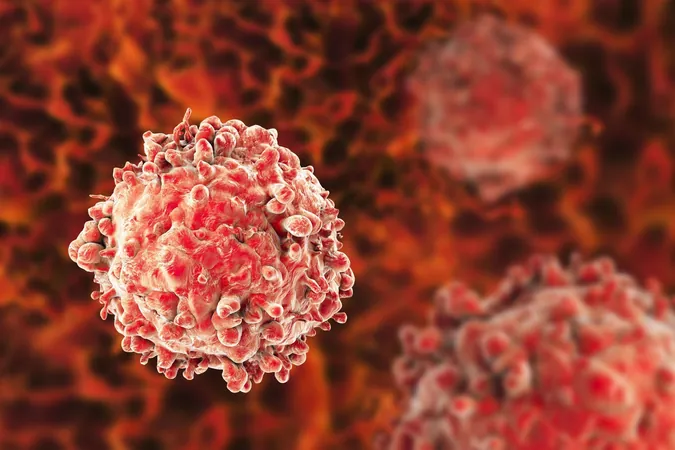
Chasing Ghost Particles: Scientists Unveil Secrets of Elusive Neutrinos to Decode Dark Matter Mystery
2025-04-26
Author: Amelia
The Pursuit of Neutrinos: A High-Stakes Scientific Adventure
The quest for neutrinos—specifically the elusive sterile neutrinos—has intensified in recent years. Known as "ghost particles," these enigmatic entities may hold the crucial secrets needed to demystify both our planet and the cosmos. A team of dedicated researchers from various universities and national laboratories across the United States has embarked on an ambitious mission to uncover the truths surrounding these particles, using nuclear reactors as their primary observation tools.
The Enigmatic Nature of Neutrinos
Neutrinos are incredibly lightweight, electrically neutral subatomic particles that challenge scientists due to their almost imperceptible interactions with matter. This unique property allows them to traverse vast amounts of material without detection. Despite their ghostly nature, neutrinos are plentiful and play pivotal roles in cosmic events, being generated in supernovae, during radioactive decay, and from cosmic ray impacts.
Interestingly, nuclear reactors have proven to be reliable sources for neutrino detection. Within a reactor's core, nuclear fission generates both electrons and antineutrinos—neutrinos' antiparticle counterparts. As these particles move through space, they can oscillate into one another, which is critical for investigating the existence of sterile neutrinos that, theoretically, interact solely through gravity.
Introducing PROSPECT-I: The Neutrino Detector at the Forefront of Research
At the center of this groundbreaking research is the PROSPECT-I detector located at the High Flux Isotope Reactor (HFIR) in Oak Ridge National Laboratory. Its strategic placement allows it to capture vital data on neutrino behavior, particularly targeting those with higher mass values. As antineutrinos emitted from the reactor traverse through space, their chance of becoming sterile neutrinos—decreasing the count of detectable neutrinos—rises.
Professor Russell Neilson from Drexel University emphasizes the PROSPECT project's impressive outcomes, asserting that despite its modest size, the detector has yielded significant scientific advancements. Their findings have contributed to a deeper understanding of sterile neutrinos, antineutrino emissions, and potential links to dark matter. Collaborating with experts from Lawrence Livermore National Laboratory, they are refining techniques to enhance data extraction and background rejection.
Charting New Territories in Neutrino Research
The research team aims to broaden their search for sterile neutrinos across various mass ranges. This expansion is expected to yield critical insights into nuclear reactions and the shadowy realm of dark matter. Recent findings detailed in *Physical Review Letters* signify a leap forward in this ongoing scientific endeavor.
What's at Stake: The Impacts of Neutrino Research
The pursuit of sterile neutrinos stands as a vital step in advancing our grasp of the universe's fundamental makeup. Investigating these subtle particles could illuminate their links to dark matter—a mysterious substance that accounts for a significant portion of the universe. The groundbreaking efforts led by the PROSPECT-I team and their collaborators bridge crucial gaps in modern physics, pushing closer to resolving major enigmatic questions.
As researchers improve their methodologies and expand their exploration, the horizon for monumental discoveries grows ever broader. What hidden revelations might these spectral particles disclose as scientists venture further into the depths of unexplored physics?









 Brasil (PT)
Brasil (PT)
 Canada (EN)
Canada (EN)
 Chile (ES)
Chile (ES)
 Česko (CS)
Česko (CS)
 대한민국 (KO)
대한민국 (KO)
 España (ES)
España (ES)
 France (FR)
France (FR)
 Hong Kong (EN)
Hong Kong (EN)
 Italia (IT)
Italia (IT)
 日本 (JA)
日本 (JA)
 Magyarország (HU)
Magyarország (HU)
 Norge (NO)
Norge (NO)
 Polska (PL)
Polska (PL)
 Schweiz (DE)
Schweiz (DE)
 Singapore (EN)
Singapore (EN)
 Sverige (SV)
Sverige (SV)
 Suomi (FI)
Suomi (FI)
 Türkiye (TR)
Türkiye (TR)
 الإمارات العربية المتحدة (AR)
الإمارات العربية المتحدة (AR)